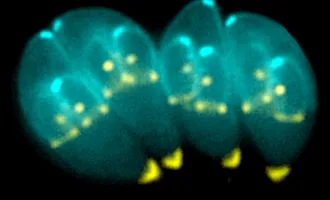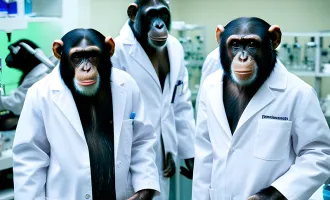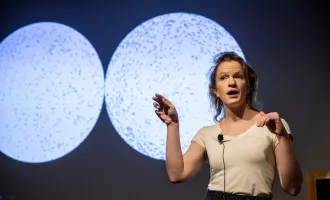Vaccine Outreach
This is an extra web-only edition of my column between print issues while Synapse is on holiday break. As such, I’m taking this opportunity to write in less-formal (was I ever formal?) blog form.
It’s the most wonderful time of the year! We’re getting ready to visit family and usher in the new year and starting to check out mentally from work and classes. But even while you’re gift shopping, frolicking in the streets and drinking eggnog lattes, a sinister viral epidemic is brewing around the country. When you go home, you may be dropped into a raging influenza (flu) season. The Centers for Disease Control and Prevention (CDC) recently announced that this year’s flu season may be especially challenging and severe and urged immediate vaccination.
The prevalent flu strain this year is H3N2 influenza A. This strain has been associated with more severe symptoms and is more prone to antigenic drift, in which there are small changes in flu’s surface antigens. Drift (and more dramatic antigenic shifts) makes yearly vaccination by a cocktail targeted at three or four strains necessary. The CDC makes an educated prediction of the prevalent strains of next season when it develops the vaccine, so any drift that occurs after the vaccine has been manufactured will make the vaccine less effective.
This is the case this season: despite H3N2 being included in this year’s vaccine, a drifted version of H3N2 has cropped up, and vaccinated people are getting sick with a mild form of the flu. However, experiencing milder symptoms of a severe form of flu – and also gaining immunity to two other flu strains – is inarguably an improvement over skipping the vaccine altogether.
Most people at UCSF know how vaccines work and that they are critical for personal and community immunity. We’re aware that the study linking vaccines to autism was a hoax. We wince when we read about whooping cough and measles infecting and killing children in communities with relatively low vaccination rates. But how good are we at convincing non-scientist family and friends to be vaccinated (and make sure their children are vaccinated)? When we write in fellowship and grant applications that we engage in science outreach, many of us think about getting kids excited about science. But what about reaching out to our skeptical, stubborn friends and urging them to take vaccines, particularly the flu vaccine, seriously?
What is it about young people being so blasé about the flu vaccine? Yes, many of us had the flu when we were little and lived to tell the tale. Yes, statistics say that we probably won’t die of the flu. And yes, many of us are young and healthy with strong immune responses.
But there’s an epidemic sweeping the world that kills 250,000-500,000 people every year (WHO) – including an estimated 3,000-49,000 in the United States (CDC). These aren’t insignificant numbers, and they don’t only affect the very young and very old. Some strains of flu are severe in healthy young adult populations (remember H1N1 in 2009?). And even if only the very young and old can die of flu, would you really want to be personally responsible for transmitting the flu to someone who dies of it?
Every winter, I answer dozens of questions about vaccines. Is it worth getting a vaccine for something I won’t get sick with? Can I get sick from the vaccine itself? Can it push the flu virus to become resistant, just as antibiotic misuse can push bacteria to become antibiotic-resistant? What if scientists someday discover a long-term complication of getting vaccinated? Most of the questions I’ve encountered have fairly straightforward answers – most of which are either “yes,” “no,” or “the benefits outweigh the risks” – followed by a basic tutorial in immunology. Getting asked questions is great, because it means I’ve captured their attention, identified the gap in their biology knowledge, and can quickly rectify their misunderstanding. In the best cases, a skeptic becomes an advocate, getting vaccinated and telling their friends.
If you understand the biology of vaccines and the immune response and the importance of personal and community immunity, then spread the word. Take the time to tell people how it works. Take a deep breath, hide any mounting frustration, and walk them through the biology. Once they understand the basics, those facts will speak for themselves and stand up to scrutiny. Heck, put it on your CV as “science outreach.”
Happy Holidays!


